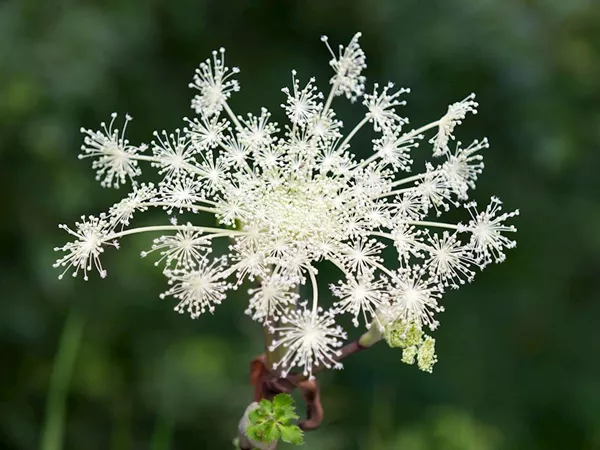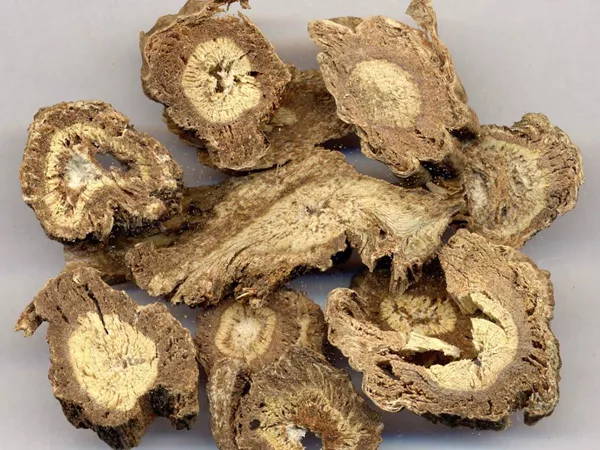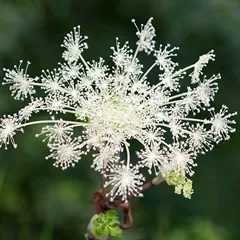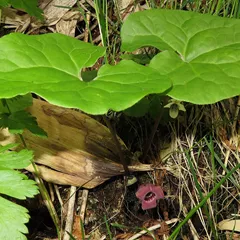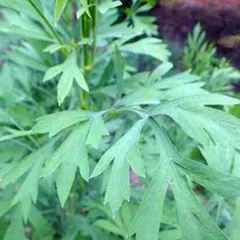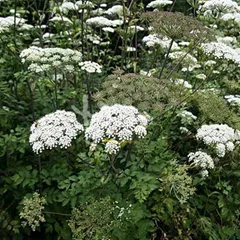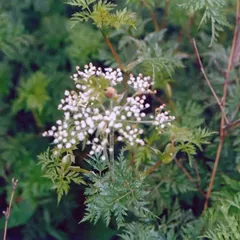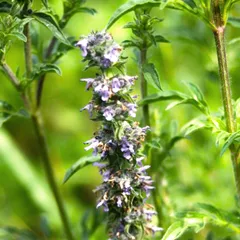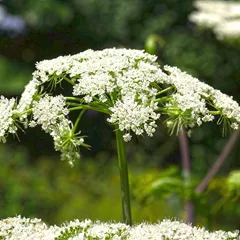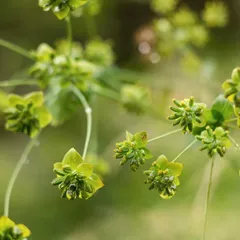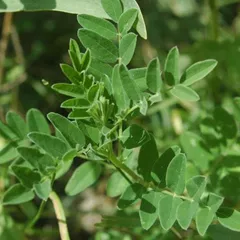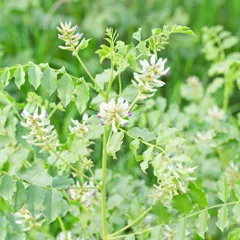Use of Du Huo (pubescent angelica roots) in TCM
Please note that you should never self-prescribe TCM ingredients. A TCM ingredient is almost never eaten on its own but as part of a formula containing several ingredients that act together. Please consult a professional TCM practitioner, they will be best able to guide you.
Preparation: Remove impurities, wash, slice, dry at low temperatures.
Dosage: 3 - 9 grams
Main actions according to TCM*: Disperses Wind, Cold, Dampness. Relieves pain. Relieves Lesser Yang (Shao Yang) headache.
Primary conditions or symptoms for which Du Huo may be prescribed by TCM doctors*: Back pain Knee pain Headache Rheumatism Common cold Toothache
Contraindications*: Do not use when there is Yin Deficiency with Heat signs.
Common TCM formulas in which Du Huo is used*
Du Huo Ji Sheng Tang
Source date: 650 AD
Number of ingredients: 15 herbs
Formula key actions: Anti-rheumatic, clears Wind, Cold and Damp Stagnation. Strengthens the function of the Liver and Kidney. Tonifies Qi and Blood.
Conditions targeted*: Chronic lower back painSciatica and others
Du Huo is a king ingredient in Du Huo Ji Sheng Tang. Like the name indicates, it means it has more power than other ingredients in the formula.
In Du Huo Ji Sheng Tang, Du Huo expels Wind, Dampness, and Cold from the Lower-Burner, bones, and sinews.
Ren Shen Bai Du San
Source date: 1119 AD
Number of ingredients: 12 herbs
Formula key actions: Releases the Exterior. Dispels Wind and Dampness. Augments Qi.
Conditions targeted*: Common coldInfluenza and others
Du Huo is a king ingredient in Ren Shen Bai Du San. Like the name indicates, it means it has more power than other ingredients in the formula.
In Ren Shen Bai Du San, Du Huo dispels Wind Cold from the Exterior, dispels Dampness and alleviates
pain. It treat the symptoms of fever and chills without sweating, headache, and common pain and soreness.
Jing Fang Bai Du San
Source date: 1550 AD
Number of ingredients: 13 herbs
Formula key actions: Releases the Exterior. Dispels Wind and Dampness. Augments Qi.
Conditions targeted*: Common coldInfluenza and others
Du Huo is a king ingredient in Jing Fang Bai Du San. Like the name indicates, it means it has more power than other ingredients in the formula.
In Jing Fang Bai Du San, Du Huo dispels Wind Cold from the Exterior, dispels Dampness and alleviates
pain. It treat the symptoms of fever and chills without sweating, headache, and common pain and soreness.
Qiang Huo Sheng Shi Tang
Source date: 1247 AD
Number of ingredients: 7 herbs
Formula key actions: Expels wind and dampness.
Conditions targeted*: Rheumatic feverUpper respiratory tract infections and others
Du Huo is a king ingredient in Qiang Huo Sheng Shi Tang. Like the name indicates, it means it has more power than other ingredients in the formula.
In Qiang Huo Sheng Shi Tang, Du Huo expels Wind Damp from the lower reaches of the Greater Yang Channel. The combination of the two key herbs are very effective in treating general Wind Damp patterns.
Shi Wei Bai Du San
Source date: 1760-1835 AD
Number of ingredients: 10 herbs
Formula key actions: Dispels Wind and transforms Dampness. Clears Toxic Heat .
Conditions targeted*: AcneBoils and others
Du Huo is a deputy ingredient in Shi Wei Bai Du San. This means it helps the king ingredient(s) treat the main pattern or it serves to treat a coexisting pattern.
In Shi Wei Bai Du San, Du Huo dispel Damp-Wind.
It also resolves the Exterior and dissipate the accumulation of Toxic-Heat in the Exterior of the body.
Sheng Yang Yi Wei Tang
Source date: 1247 AD
Number of ingredients: 16 herbs
Formula key actions: Strengthens the Spleen. Augments the Qi. Raises the Yang. Releases Dampness.
Conditions targeted*: Atrophic gastritisChronic pelvic inflammatory disease and others
Du Huo is an assistant ingredient in Sheng Yang Yi Wei Tang. This means that it either serves to reinforces the effect of other ingredients or it moderates their toxicity.
In Sheng Yang Yi Wei Tang, Du Huo is acrid and dispersing in nature. It is a Wind dispersing herb that promote Yang Qi circulation.
When used together with Milkvetch root, Ginseng, Atractylodes rhizome, it also strengthen the ascending movement of Qi, allowing it to move from below to above without Stagnation.
Key TCM concepts behind Du Huo's properties
In Traditional Chinese Medicine (TCM), Du Huo belongs to the 'Herbs that dispel Wind and Dampness' category. These herbs typically help treat what's called 'bi pain' (i.e. painful obstruction) in TCM. This roughly corresponds to arthritic and rheumatic conditions with pain, stiffness and numbness of the bones, joints and muscles.
Furthermore Du Huo is Warm in nature. This means that Du Huo tends to help people who have too much 'Cold' in their body, although with less effect than a plant that would be Hot in nature. Balance between Yin and Yang is a key health concept in TCM. Those who have too much Cold in their body are said to either have a Yin Excess (because Yin is Cold in nature) or a Yang Deficiency (Yang is Hot in Nature). Depending on your condition Du Huo can help restore a harmonious balance between Yin and Yang.
Du Huo also tastes Bitter and Pungent. The so-called 'Five Phases' theory in Chinese Medicine states that the taste of TCM ingredients is a key determinant of their action in the body. Bitter ingredients like Du Huo tends to have a cleansing action on the body by clearing Heat, drying Dampness and promoting elimination via urination or bowel movements. On the other hand Pungent ingredients tend to promote the circulations of Qi and Body Fluids. That's why for instance someone tends to sweat a lot when they eat spicy/pungent food.
The tastes of ingredients in TCM also determine what Organs and Meridians they target. As such Du Huo is thought to target the Bladder and the Kidney. In TCM the impure water collected by the Kidneys that cannot be used by the body is sent to the Bladder for storage and excretion as urine. The Kidneys do not only regulate the urinary system but also play a key role in the reproductive system and the growth and aging process of the body.
Research on Du Huo
The anti-inflammatory and analgesic principle from the root of Angelica pubescens was identified as osthol.1
The root of Angelica pubescens has anti-inflammatory and analgesic constituents.2
Sources:
1. T Kosuge, M Yokota, K Sugiyama et al. (1985). Studies on Bioactive Substances in Crude Drugs Used for Arthritic Diseases in Traditional Chinese Medicine. II. Isolation and Identification of an Anti-inflammatory and Analgesic Principle from the Root of Angelica pubescens MAXIM. Chemical and Pharmaceutical Bulletin, 33(12), p. 5351-5354. DOI: https://doi.org/10.1248/cpb.33.5351
2. Yuh-Fung Chen, Huei-Yann Tsai, Tian-Shung Wu (1995). Anti-Inflammatory and Analgesic Activities from Roots of Angelica pubescens. Planta Med, 61(1): 2-8. DOI: 10.1055/s-2006-957987

